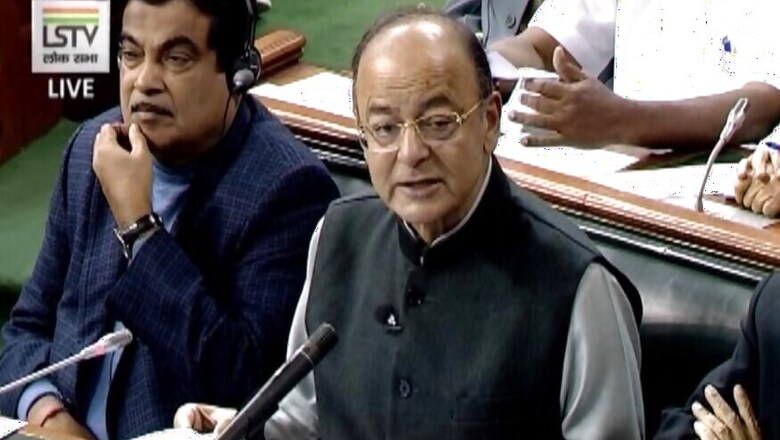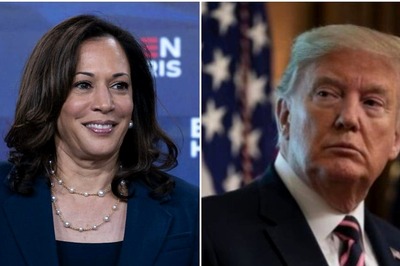
views
New Delhi: Finance Minister Arun Jaitley has strung together the competing demands of good economics and prudent politics to present a budget that aims to spur growth with a raft of stimulus packages largely aimed at the rural economy and incentives to boost private investment.
Farmers were assured a minimum support price 1.5 times the cost of production for their output and a health insurance scheme for 10 crore families was announced, to the benefit of the Bharat constituency of the budget, whereas stock market investors weren’t as lucky as Jaitley reinstated a long term capital gains tax, albeit with prospective effect.
At the heart of Jaitley’s budget is an aggressive push to please rural voters by helping them pay for healthcare, education, generate jobs and help with job training, and by sharply increasing investment in India’s creaking infrastructure. But these proposals, with a sharp eye on the general elections in 2019, means that the government has wavered on fiscal discipline, with the budget shortfall due to breach the 3.2% target and hit 3.5% in the year ending March 31.
The budget packs a slew of plans such as a new Rs 5 lakh a year public health insurance scheme that will cover hospitalisation costs for 10 crore vulnerable households and a Rs 10,000-crore fund to prop up fishery, aquaculture development and animal husbandry that the government believes will provide relief to rural households struggling with rising prices. The health insurance scheme, dubbed Modicare by many and which the government said was the largest public healthcare scheme anywhere in the world, will involve an outlay of Rs 4000 crore.
"We have taken up programs to direct the benefits of structural reforms and good growth to reach the farmers, poor and other vulnerable sections of the society and uplift the underdeveloped regions," Jaitley said in his budget speech, widely expected to be his last budget speech before general elections next year. "This year’s budget will consolidate these aims and particularly focus on strengthening agriculture and rural economy."
The budget, however, spooked the stock markets with a proposal to reintroduce a 10% long term capital gains tax on gains of over Rs 1 lakh on investments. (Capital gains earned on shares until January 31 will be shielded and short-term capital gains remains unchanged at 15%.)
The benchmark Sensex and Nifty fell sharply in the immediate aftermath of his tax announcement, but by afternoon the indices had recovered.
There was also little cheer for salaried taxpayers because the tax brackets remain unchanged, though they have been allowed a standard deduction of Rs 40,000 for reimbursing travel and medical expenses. That said, the actual tax benefit would be only Rs 10,000 for each taxpayer given that the deduction is in lieu of travel and medical expense reimbursement is currently at Rs 30,000.
The government hopes to pay for these measures with contributions from selling stakes in companies it owns. For 2018-19, the disinvestment target is set at Rs 80,000 crore. To cover the costs of government-sponsored programmes in health and education, the education cess has been increased by 1% to 4% to help the government raise Rs 11,000 crore.
Jaitley’s budget on Thursday has assumed more importance than his previous four exercises because of the general election next year. Last year, the ruling BJP’s closely-fought win in the Assembly elections in Prime Minister Narendra Modi’s home state of Gujarat was conspicuous by widespread voting for opposition parties by the rural population. On Thursday too, it appeared to be a bad day electorally for the BJP, with the party losing crucial bypolls in its bastion state of Rajasthan and West Bengal.
Against this backdrop, the budget has confirmed speculation that the budget would be aimed at wooing rural voters before the next general election.
The budget presents a raft of plans for relieving the economy from the shocks triggered by the crucial demonetisation and good and services tax reforms the government introduced. For example, the proposed spending on rural infrastructure has been set at a whopping Rs 14.34 lakh crore. Subsidy to the textile sector is set to increase 18% to Rs 7,140 crore.
Though recent months have delivered a stream of news bolstering the notion of a vigorous recovery after the economy adjusted to demonetisation and GST, several economists have pointed to the risks posed by rising oil prices.
The latest economic survey released earlier this week predicted that India's GDP growth will accelerate from 6.75% this year to 7-7.5% in 2019, which, if realised, would match the 7.1% growth seen in the 2017 fiscal.




















Comments
0 comment